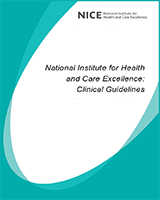From: Evidence reviews for breast radiotherapy

NCBI Bookshelf. A service of the National Library of Medicine, National Institutes of Health.
| Outcomes | Illustrative comparative risks* (95% CI) | Relative effect (95% CI) | No of Participants (studies) | Quality of the evidence (GRADE) | Comments | |
|---|---|---|---|---|---|---|
| Assumed risk: WBRT | Corresponding risk: PBI/APBI | |||||
|
Local recurrence free survival: local recurrence in the ipsilateral breast as a discrete outcome Follow-up: 5 to 10 years1 | 14 per 1000 |
14 per 1000 (9 to 21) |
HR 0.98 (0.63 to 1.52) |
3407 (5 studies) | Low1,2 | |
|
Cosmesis, physician reported Assessed with four-point scales Follow-up: 3 to 5 years | 153 per 1000 |
151 per 1000 (87 to 263) |
RR 0.99 (0.57 to 1.72) |
3764 (6 studies) | Very low3,4,6 | Four-point scales were used to assess cosmesis as poor/worse, fair/normal, good, or excellent. These results represent those with poor/worse or fair/normal cosmesis. |
|
Cosmesis, patient reported at 5 years follow-up Assessed with four-point scales Follow-up: mean 5 years | 146 per 1000 |
147 per 1000 (98 to 220) |
RR 1.01 (0.67 to 1.51) |
1966 (4 studies) | Very low3,5,6 | Four-point scales were used to assess cosmesis as poor, fair, good, or excellent. These results represent those with poor or fair cosmesis. |
|
Cosmesis, nurse reported at 5 year follow-up Assessed with four-point scale Follow-up: mean 5 years | 134 per 1000 |
327 per 1000 (211 to 511) |
RR 2.44 (1.57 to 3.81) |
335 (1 study) | Low2,3 | Cosmesis characteristics were graded on a four-point scale: poor, fair, good, excellent. Results are for those with poor or fair cosmesis. |
|
Acute radiotherapy (RT) skin toxicity Assessed with the Radiation Therapy Oncology Group Common Toxicity Criteria Follow-up: 0 to 90 days | 752 per 1000 |
120 per 1000 (60 to 248) |
RR 0.16 (0.08 to 0.33) |
1790 (3 studies) | Low4 | Treatment tolerance was assessed using the acute radiation morbidity scoring criteria. |
|
Late RT skin toxicity Assessed with the Radiation Therapy Oncology Group Common (RTOG CTC) 5-point scale10 Follow-up: 3 to 5 years | 63 per 1000 |
61 per 1000 (19 to 190) |
RR 0.97 (0.31 to 3.03) |
3175 (5 studies) | Very low4,6 | |
|
Breast Pain Self-reported Follow-up: 3 to 5 years | 67 per 1000 |
61 per 1000 (45 to 81) |
RR 0.9 (0.67 to 1.2) |
2475 (3 studies) | Very low2,7,8 | Self-reported using the European Organisation for Research and Treatment of Cancer (EORTC) QLQ-BR23 breast cancer module, and NCI CTC criteria. |
|
Fat necrosis Assessed with EORTC and NCI 5-point scale Follow-up: 3 to 5 years | 65 per 1000 |
89 per 1000 (64 to 122) |
OR 1.4 (0.98 to 2) |
1899 (3 studies) | Low2,8 | Defined as grade 1 to 3 on EORTC and NCI CTC. |
|
Health related quality of life Assessed using EORTC QLQ-C30 and BR23 module Follow-up: mean 2 years | - |
The mean health related quality of life in the intervention groups was 16 higher (10.99 to 21.01 higher) | - |
205 (1 study) | Low2,9 | |
|
Overall survival Follow-up: mean 5 years | 53 per 1000 |
41 per 1000 (30 to 56) |
HR 0.76 (0.55 to 1.06) |
3047 (3 studies) | Moderate2 | |
|
Disease-free survival Follow-up: mean 5 years | 31 per 1000 |
29 per 1000 (20 to 42) |
HR 0.93 (0.63 to 1.37) |
3305 (4 studies) | Moderate2 | |
|
Distant metastasis-free survival Follow-up: mean 5 years | 22 per 1000 |
20 per 1000 (13 to 32) |
HR 0.9 (0.56 to 1.46) |
3305 (4 studies) | Moderate2 | |
| Treatment-related mortality | No treatment related deaths | No treatment related deaths | Not estimable |
1184 (1 study) | Moderate2 | |
APBI: accelerated partial breast irradiation; CI: Confidence interval; CTC, Common Toxicity Criteria; EORTC QLQ-30: European Organisation for Research and Treatment of Cancer Quality of Life Questionairre; HR: Hazard ratio; NCI, National Cancer Institute; PBI: partial breast irradiation; RR: Risk ratio; RT: radiotherapy; RTOG: Radiation Therapy Oncology Group; WBRT: whole breast radiotherapy
Clinical heterogeneity was substantial relating to radiotherapy dose, technique and use of quality assurance procedures.
< 300 events.
Five of 6 studies were at high risk of bias for blinding of outcome assessors for subjective outcomes.
Very serious heterogeneity (I2>80%); random effects model used, no subgroup analysis accounted for heterogeneity.
Serious heterogeneity (I2>50% but <80%); random effects model used, no subgroup analysis accounted for heterogeneity.
Effect estimate includes both default MID thresholds and the null effect (1).
Blinding of participants to treatment group not possible for self-reported breast pain.
Effect estimate includes one default MID threshold and the null effect (1).
Blinding of outcome assessors was not reported.
From: Evidence reviews for breast radiotherapy

NCBI Bookshelf. A service of the National Library of Medicine, National Institutes of Health.